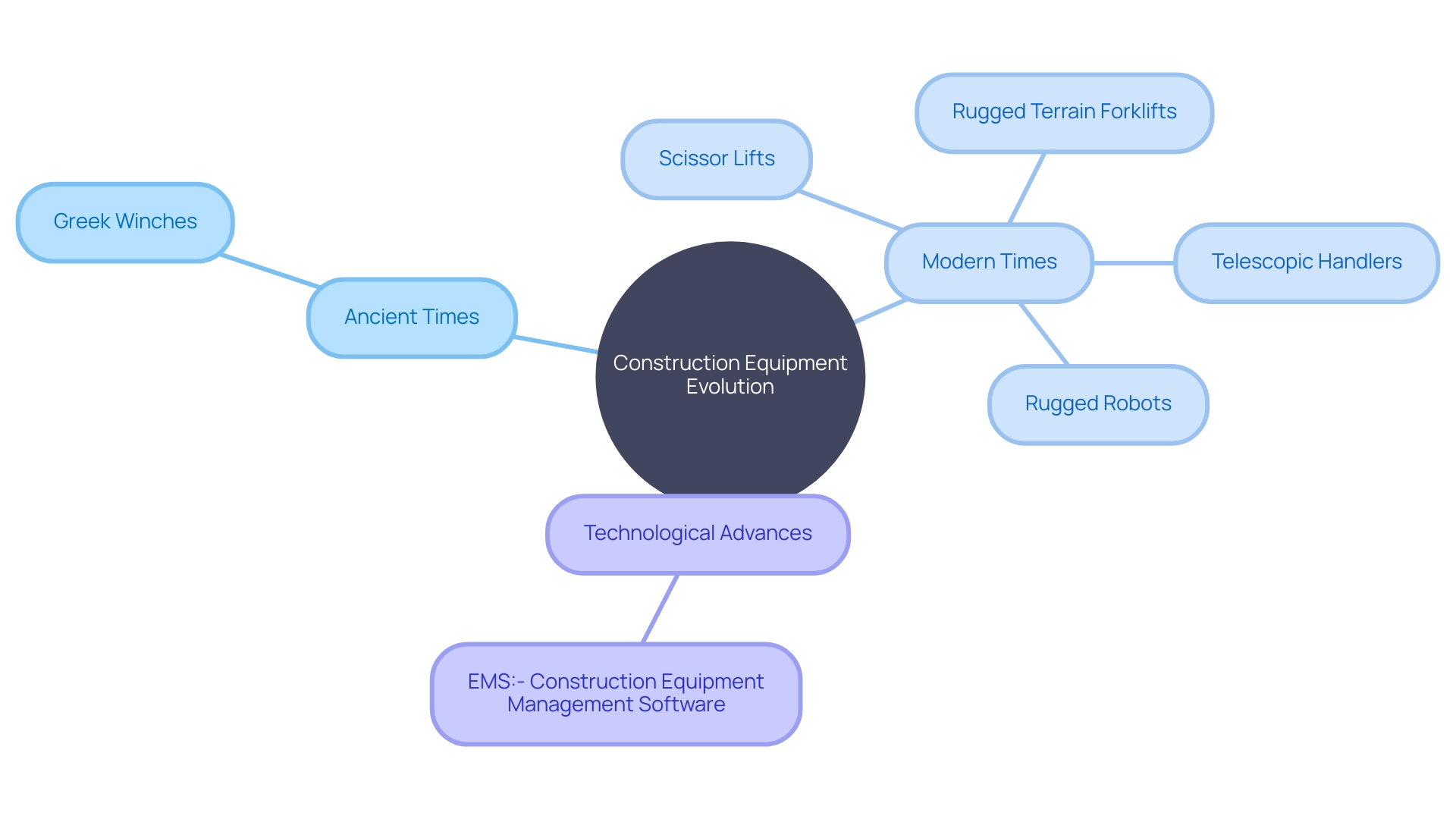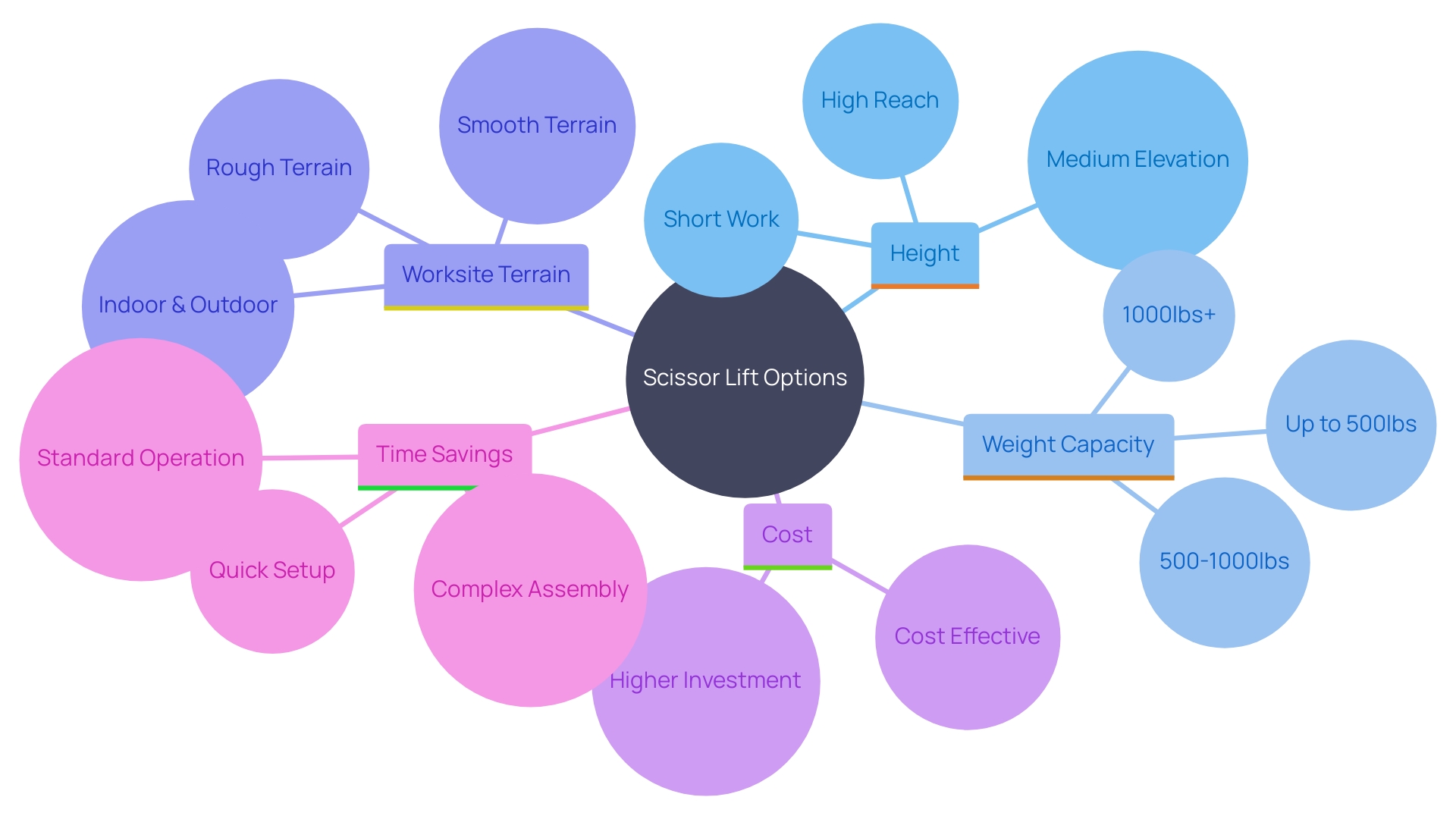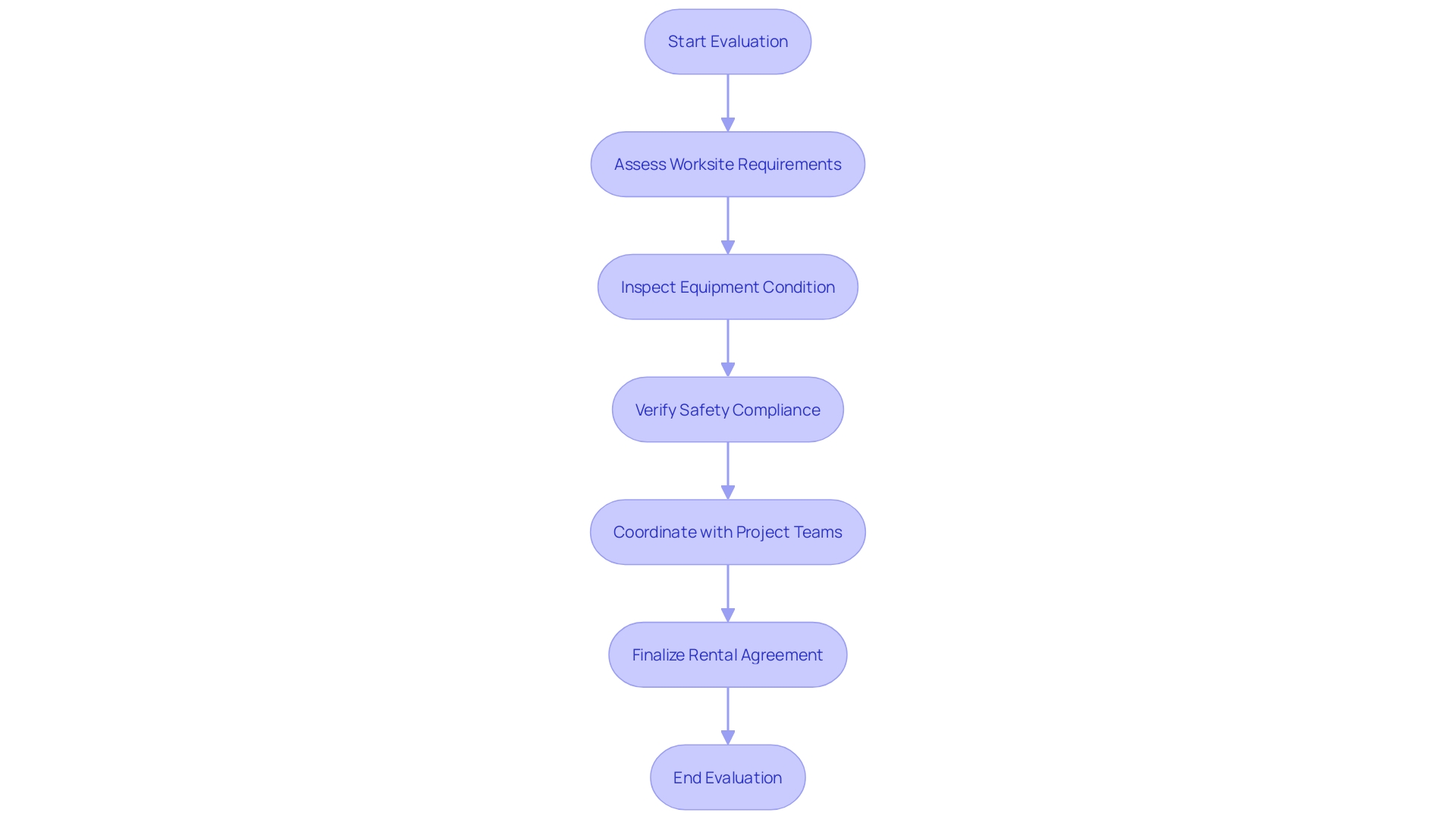Introduction
Scissor lifts are an essential tool for tackling elevated tasks with stability and reach. With origins in ancient Greek winches and advancements in engineering, modern scissor lifts have become a crucial part of project completion. By selecting the right scissor lift, construction managers can streamline operations, enhance safety, and minimize downtime.
Safety is a top priority, and careful evaluation of worksite requirements and equipment condition is necessary. Operating a scissor lift safely requires adherence to proven safety protocols and comprehensive training. Integrating scissor lifts into a project's workflow and maximizing efficiency can lead to optimal productivity.
However, it's important to avoid common mistakes such as neglecting maintenance and ignoring safety protocols. Regular maintenance and inspections are crucial to ensure the longevity and optimal functionality of scissor lifts, promoting a culture of safety and reducing potential downtime. By following these guidelines, construction managers can harness the versatility and efficiency of scissor lifts, achieving successful project outcomes.
Understanding Scissor Lifts
When tackling elevated tasks, scissor lifts prove to be indispensable for their stability and reach. Originating from historical innovations, such as the ingenuity of ancient Greek winches which transformed construction with their versatility, modern scissor lifts embody advanced engineering to streamline project completion. Today's machinery, like Sellick's rugged terrain forklifts, demonstrate the evolution of equipment designed to sail over challenging landscapes with heftier payloads.
Selecting a scissor lift that fits the intricate demands of a job site is crucial. The modern construction manager recognizes that a single piece of adept equipment—much like the all-in-one functionality of a telescopic handler—can pivot between roles, thus negating the need for multiple specialized machines that would otherwise strain the budget and consume precious time. Furthermore, innovative approaches in the field, such as the precession of Rugged Robots laying out construction site plans, shed light on the advancement and efficiency that the latest technology grants to the industry.
To enhance safety and curb the risk of musculoskeletal disorders, which have been identified as a prevalent issue in construction workers globally, it's vital to choose equipment like scissor lifts that minimize the need for precarious physical postures and manual material handling. Harnessing the lifting solutions that meet or surpass industry standards, as Titan Lifting does, attributes to greater safety, reducing downtime resulting from injury or equipment failure.
Therefore, embracing the versatility of scissor lifts, along with a strategic selection from the variety of models available, empowers construction managers to carry out operations with greater efficiency, safety, and cost-effectiveness, embodying the innovative spirit that turned the forklift into an outdoor powerhouse and paved the way for the multifaceted machines of the modern age.

Choosing the Right Scissor Lift for the Job
When you're gearing up for a project, selecting the right scissor lift can be as critical as choosing the proper protective gear—both decisions profoundly impact safety and efficiency on the job. Key considerations such as the height you need to reach, the weight of the materials you'll be lifting, and the conditions of the worksite terrain are fundamental in making an astute choice. This guidance draws from practices akin to Occupational Safety and Health Administration's approach, which prioritizes hazard elimination, followed by mitigation and the use of Personal Protective Equipment.
A telescopic handler could be an alternative option, serving multiple functions and potentially trimming costs and time. However, if a scissor lift is the tool for the task, remember that like protective equipment for scooter users—surveyed but underused despite its proven efficacy—choosing not to skimp on the right lift can prevent operational setbacks and accidents. With the goal to enhance productivity while respecting the beam balance of safety and cost, this section will help you navigate the spectrum of scissor lifts available, ensuring you secure a unit that aligns perfectly with the demands of your project.

Pre-Rental Checklist
Utilizing a scissor lift requires careful preparation, much like mapping out a construction project before breaking ground. Part of this preparation involves a thorough pre-rental evaluation to streamline your rental process while ensuring your project's efficiency and worker safety. Here's a thoughtfully devised checklist to guide you in evaluating your worksite requirements and the scissor lift's mechanical readiness before you finalize that rental agreement:
- Assess the Worksite: Scrutinize your project area. Consider space constraints, ground conditions, and the height you need to reach. This understanding will dictate the scissor lift type that best suits your job.
- Inspect Equipment Condition: Just as personal protective equipment must be checked, so must your rental. Examine the scissor lift for any defects or maintenance issues that could hinder operations or compromise safety.
- Verify Safety Compliance: Ensure the lift adheres to safety standards. Safety regulations are critical, not only for compliance but as predictors of a safe work environment, reducing retrospective safety measures like accident rates.
- Coordinate with Teams: Consult with your project management and onsite crew. Their insights can be invaluable for optimizing the equipment’s use and preventing unnecessary downtime.
Following this checklist can preempt safety incidents and operational disruptions, making it a pivotal step in facilitating a seamless integration of rental equipment into your project’s workflow.

Operating a Scissor Lift Safely
Mastering the operation of a scissor lift is essential for maintaining a safe work environment. To ensure the safety of all personnel involved and the efficiency of your projects, it's critical to adhere to proven safety protocols. Begin with comprehensive pre-operation checks to assess the lift's condition.
Position the scissor lift correctly to maintain stability and avoid any obstructions that could pose hazards during operation. Moreover, employ safe driving techniques to navigate worksites effectively.
Recent industry accidents, such as the GM Cruise robotaxi incident and workplace fatalities at Hyundai and Hanwha Ocean, underscore the consequences of neglecting safety measures. These events are stark reminders that cutting corners on safety training and hazard elimination can lead to serious injuries or even fatalities. For instance, reports revealed that inadequate organizational response compounded the severity of the robotaxi mishap, reflecting the vital need for strict safety discipline.
To mitigate such risks, invest in your team's competence through rigorous training and certification, as safety proficiency is crucial when operating heavy machinery. As highlighted by the directives in Occupational Safety and Health Administration workplace safety training, eliminating hazards is paramount. If they cannot be eliminated, mitigate them and always utilize Personal Protective Equipment.
Manufacturers provide safety booklets with equipment like chainsaws, though it's not always certain these guidelines are rigorously followed—a good practice in all equipment use.
Remember, safety isn't just a regulatory requirement; it's a fundamental aspect of project management that safeguards lives and ensures sustainable operations. Embrace a culture of safety, and prioritize it just as highly as project deadlines and budgets, to achieve both efficiency and peace of mind.
Maximizing Efficiency with Scissor Lifts
Maximizing efficiency when renting a scissor lift goes beyond the basics of operation; it involves integrating it into a project's workflow for optimal productivity. The Sellick family’s transformation of an industrial tractor into a forklift illustrates innovation in effectively using available resources. Similarly, scissor lifts can be utilized beyond their traditional scope.
For example, integrating scissor lifts into your project's system, much like Desoutter's tool technology aligns with Kubota's IT infrastructure, can enable seamless data documentation and monitoring of the lift’s usage and efficiency. Ensuring such compatibility can mean the difference between a well-coordinated project and one fraught with errors and mismanagement.
Moreover, the emergence of robots in construction, like those used by Rugged and Dusty Robotics, demonstrates the precedent for precision and reduced errors. A scissor lift utilized with similar precision can play a significant role in the execution of tasks, from installation to maintenance, by providing stable and reliable elevation for workers. The telescopic handlers quoted as being versatile, cost-effective, and time-saving serve as an emblem for the scissor lift's potential in a construction project – a singular solution for multiple challenges.
Incorporating competitive bidding and market research from the procurement tips mentioned can also lead to the acquisition of a scissor lift that not only fits budgetary constraints but is also of a quality that enhances productivity. Doing so aligns with the 69% of contractors who acknowledge the importance of quality assurance during project closeout, implying that a well-chosen scissor lift can contribute significantly to the quality of completion.
Statistics highlight the necessity of a safe work environment and the requirement for measurable safety elements. Scissor lifts, when incorporated into safety plans, can be a leading indicator of safety, speaking to their value beyond their primary function. Integrating technology that aligns with logistics and financial goals solidifies the role of a scissor lift as more than just machinery; it is a component within a larger, strategy-driven approach to managing work at height, ensuring not only that construction managers meet the tight project deadlines but also that they do so within budget and with a focus on safety and efficiency.

Common Mistakes to Avoid
Optimizing the use of a scissor lift rental requires awareness of typical pitfalls. Mistakes such as overloading the lift, neglecting its maintenance, or ignoring safety protocols can lead to decreased efficiency and increased hazards on a job site. To circumvent these issues, diligence in operator training and certification is essential.
Insufficient training can lead to mishandling of equipment, which in turn can cause costly downtime or accidents. For example, HD Hyundai's recent safety initiative following a serious accident emphasizes the critical nature of safety and proper equipment handling techniques. An effective scissor lift operation is predicated not just on following safety guidelines but also on understanding the fine balance between productivity and the well-being of the workforce.
Adherence to these principles is key to maintaining a well-functioning project site that upholds the highest safety standards and efficiency levels.
Maintenance and Inspection Tips
Scissor lifts are an indispensable tool in maintaining operational efficiency in various industrial sectors, assuming critical roles in construction, maintenance, and warehousing tasks. Ensuring the longevity and optimal functionality of scissor lifts hinges on regular upkeep and meticulous evaluation. Far from being a mere suggestion, timely maintenance and inspection of rented scissor lifts are a cornerstone of productivity, circumventing equipment malfunctions, and diminishing potential idle periods that could impede progress.
Those who are integrally involved with heavy machinery, like Parker Technologies and Carrier, underscore the pivotal importance of reliable equipment. They denote that breakthrough technologies and precision-engineered solutions stem from proactive management of machinery. As noted by industry experts, refining equipment handling practices promotes a culture of safety and extends the service life of critical tools.
Recent industrial strategies emphasize the necessity of forecasting maintenance needs to preempt disruptions. When machinery like scissor lifts is rented for operational tasks, it's vital to align with this forward-thinking approach. Adhering to prescribed maintenance schedules not only secures the continuity of operations but also infuses confidence into the workforce, knowing the equipment they rely on is consistently performing at its peak.
As constructively pointed out by The Crosby Group, equipment productivity is closely related to reducing downtime. Innovative design and development, as seen in Kito Crosby's approach, aim to alleviate impending issues before they escalate into operational impediments. By applying this preventative mindset to scissor lift inspections, renters can sidestep volume losses associated with sudden equipment failure.
Correspondingly, it's been observed in the construction industry that safety and equipment reliability significantly mitigate risk. This preventive measure translates into careful and regular scissor lift examinations, ensuring that each component functions as intended, and any signs of wear or potential failure are addressed promptly, therefore, optimizing rental investments and upholding safety standards on site.
Conclusion
In conclusion, choosing the right scissor lift is crucial for construction managers. By considering worksite requirements and prioritizing safety, managers can streamline operations and minimize downtime. Adhering to a pre-rental checklist and conducting comprehensive training ensure efficient and safe scissor lift usage.
Integrating scissor lifts into project workflows maximizes productivity and reduces errors. Avoiding common mistakes such as neglecting maintenance and ignoring safety protocols is vital for optimal efficiency and safety. Regular maintenance and inspections extend the lifespan of scissor lifts and promote a culture of safety.
By following these guidelines, construction managers can achieve successful project outcomes with the versatility and efficiency of scissor lifts.




